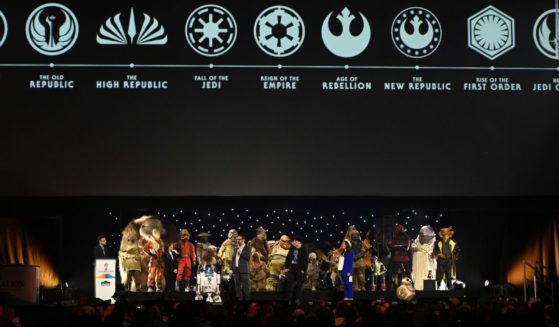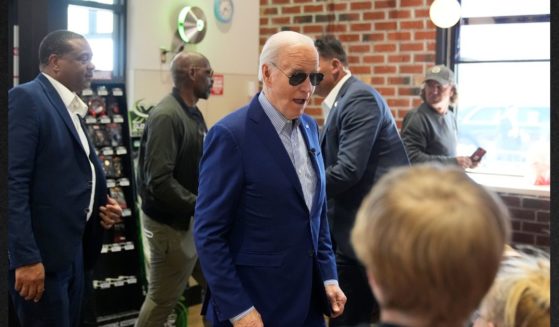Electric Plane's 8-Minute Flight Celebrated as Milestone, But Look What the Wright Brothers' Flying Machine Was Doing in 1905
“Zero emissions” advocates are hailing the first flight of an all-electric commuter airplane. However, aviation enthusiasts may chuckle in the knowledge that almost 120 years earlier the Wright Brothers trounced that achievement with a few basic materials.
Eviation, a startup based in Washington state, built the proof-of-concept plane to demonstrate the viability of electric-powered flight with a range of a few hundred miles.
Last week the plane took off from an airport at Moses Lake, Washington. It circled the airfield for eight minutes before landing, TechCrunch+ reported.
It could be described as an impressive feat. Although one that arguably is overshadowed by the experimentation of history’s very first aviators.
Not resting on their laurels after achieving the first-ever powered flight, the Wright Brothers spent the years after their 1903 triumph attempting new aircraft designs that would greatly increase engine size and load weight, as well as accommodate passengers on trips that would be longer and fly further.
By 1904 the Wrights had moved their activities from Kitty Hawk, North Carolina, and relocated to Huffman Prairie near Dayton, Ohio. They began designing an aircraft that could carry more weight while also soaring much further than the original Flyer.
Their efforts culminated in an unprecedented flight on Oct. 5, 1905. With Wilbur at the controls, their new airplane made more than 29 circles around the field, traveling more than 24 miles within a span of over 39 minutes.
That’s almost five times the length of the Eviation craft’s flight.
It was also a better calculated risk for the Wrights. Fuel supply and consumption in a normal aircraft can be easily computed. Margins for safety can be tabulated with more confidence. Contrast this with batteries, which deteriorate over time resulting in lessening of assured charge.
The difference in performance between standard aircraft and the best of electric-powered technology is a vast one. One that cannot be ignored by anyone with concern for either airplane economics or safety.
According to Aviation Pros, the Eviation test plane is powered by over 21,500 Tesla-type batteries, taking up fully half the weight of the plane. The aircraft is intended to make relatively short commuter hops before having to recharge.
On the other hand, the Gulfstream G200 — a typical midsize jet comparable in size to the Eviation plane — carries eight passengers and has enough fuel capacity to cross the Atlantic Ocean, according to Flying Magazine.
Batteries simply cannot compare to fuel derived from hydrocarbons in terms of energy storage. While there is little current data on aircraft recharging, this issue is well-dcoumented with automobiles. A recent article highlighted the uncertainty that comes with traveling great distances with electrical vehicles. An Australian TikTok user had difficulty driving between Canberra and Sydney, News.com.au reported. A journey that should have taken a few hours instead occupied an entire day because locating charging stations proved difficult. Notably, at one point it would have taken four hours to achieve a fully charged battery.
Similarly the new owner of a GMC Hummer was shocked — no pun intended — when he discovered it would take four days to draw enough current from his home outlet to recharge his vehicle — using Level 1 charging.
Ponder, then, how long it will take to recharge even smaller commuter jets. It becomes economically more feasible — and more convenient — to simply hop into a car and drive from one city to the next. By the time the airplane has completely charged, it’s possible to have gone to one’s destination and returned by ground vehicle.
That is not stopping aviation providers like Air Canada from purchasing electric planes in bulk despite openly acknowledging that the aircraft will not seat the same number of passengers as traditional planes
It can be argued that for all its technological simplicity, the Wright Brothers’ 1905 airplane was the more reliable aircraft compared to the plane from last week’s battery-powered flight. While Eviation’s craft is primarily made of carbon composite and other exotic materials, the Wrights were accomplishing much more with balsa wood, paper and an internal combustion engine.
The conclusions that can be drawn are quite clear. Electric-powered aviation is a lofty goal. But for the time being, there it must remain. Electric-powered aircraft have neither the assurance of safety or the requisite infrastructure to support them. Which are, incidentally, the same issues facing widespread adoption of their land-borne brethren.
Truth and Accuracy
We are committed to truth and accuracy in all of our journalism. Read our editorial standards.












